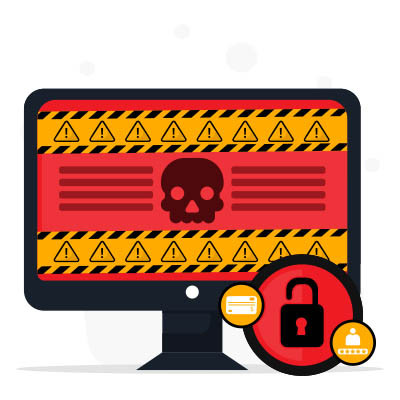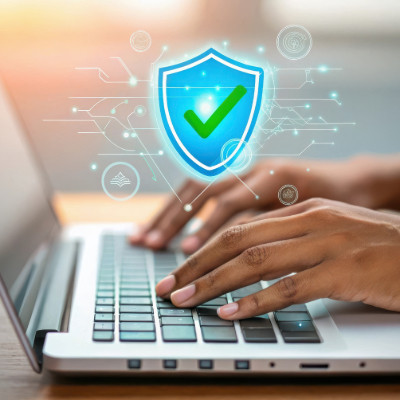With the new year just around the corner, you’re probably wondering what the latest cybersecurity threats will have in store for small businesses like yours. One such threat is the rise of agentic AI, which capitalizes on the weakest link in any business’ cybersecurity infrastructure: its human elements. If you already have a hard time figuring out if the person on the other end of the phone line is human, just wait… It’s only going to get worse.
MicroLogix Network Services, LLC Blog
You may leave the house door wide open when you step out to grab the mail. Sounds reasonable, but if a stray cat were to wander in, that was the risk you ran. The same logic applies to your digital life. Locking your computer, tablet, or phone screen is one of the simplest yet most effective steps you can take to protect your privacy and security.
The scariest threats out there are the ones that can crack your network without you even realizing it. That’s right, they’re using stolen credentials that they tricked your employees into handing over through a phishing attack. The good news, though, is that a simple multi-factor authentication solution (MFA) can be a significant step forward for your network security, and the simple act of having one makes your business much safer and less prone to cybersecurity breaches.
If you haven’t yet implemented MFA, here are three logical steps you can take to move in the right direction.
So, you’re starting a business, and every dollar goes toward growth, marketing, and making your product awesome. Technology is probably just that thing you need to check emails and run Wi-Fi.
That mindset is dead wrong.
If you treat technology as an afterthought, you're stacking the deck against yourself. Your business runs on technology, and it can either be your secret weapon or your silent killer. This month, we go into four brutal, non-technical truths you must accept about your business tech right now.
Let’s assume that, as a responsible business owner, you’ve established standard operating procedures for your employees to follow—including the tools they can officially use in the course of their tasks. That said, there is always the chance that someone encountered an issue and independently investigated and “fixed” it.
If anyone is using an unapproved tool or an external account to access and manipulate your business data, you have a problem… a problem known as shadow IT.
Antivirus is great and all, but it’s important in business to acknowledge that not all solutions you implement are equal. What seems like a good deal could actually put your business at risk. If your antivirus isn’t reliable, you can’t continue with business with the assurance that everything will be okay.
We see the endpoint—that includes every laptop, desktop, server, mobile device, and IoT gadget connected to your network—as the front line of your defense. Failing to secure every single one of these points is not just a risk; it's an invitation. You need to identify all the endpoints on your network and work to secure them. Here’s why, and how.
From the classic Nigerian Prince emails to the cleverly crafted fake invoice, malicious digital correspondence is a constant, evolving threat to any business. It's not just about losing a few dollars, either. A successful phishing attack can cripple your operations, compromise sensitive data, and even lead to devastating financial and reputational damage.
Technology unlocks incredible potential, but is also constantly stalked by an increasingly sophisticated adversary: cybercrime. For businesses of all sizes, threats are changing faster than ever, driven by new technologies and a highly organized criminal industry.
To protect your profits, reputation, and continuity, your business can no longer rely on yesterday’s defenses. You need to understand the evolution of the threat and implement a proactive, multi-layered strategy.
When you send someone within your business an email, the expectation is that they will read it and respond accordingly. Unfortunately, messages can sometimes slip through the cracks, especially for small businesses with limited staff and an impossible workload to keep up with. If you primarily use email to communicate with your team, you need an email archiving system that can help ensure lost emails aren’t setting your business up for disaster.
Passwords are an important part of ensuring your IT infrastructure remains safe, but they are far from the most effective security solution. It’s not necessarily the fault of the password, either; it’s just that hackers and scammers have gotten a lot better at cracking passwords in recent years, even reasonably complex ones. We recommend you implement multi-factor authentication as a secondary precaution against breaches—and here’s why.
How much would you be willing to pay to keep all of your business’ records from being locked away, or to keep them off the dark web? Hundreds? Thousands? More?
This is precisely what cybercriminals rely on when they infect businesses just like yours with ransomware. Let’s talk about ransomware a bit: what it is, why it’s so effective, and (most importantly) how to keep it from dragging your business down.
Here’s a fun thought experiment; can your team identify phishing scams and respond to them appropriately? It’s a skill that must be learned if you want your organization to be successful and safe. Today, we’re taking a look at the three big signs you’re looking at a phishing scam (and what to do about it).
Ransomware seems to be everywhere. One can hardly turn on the news without hearing about a new ransomware attack—and that’s just the ones that hit the news cycle, not to mention the smaller ones that are either hidden by the companies or not considered newsworthy. Meanwhile, businesses are urged to invest in more security tools and IT-themed acronyms than ever. Is all this investment actually worth it? Is ransomware actually as significant a threat as it is made out to be?
The truth is, it isn’t. If anything, it’s even worse.
Every business relies on vendors for a lot: software, services, you name it. They’re a huge part of our businesses’ ability to meet the market’s demands. The way business is done today, in order for them to do their job, they often need access to our data; but, just like you wouldn’t hand over your house keys to a stranger, you shouldn’t just hand over the keys to your data to every vendor without a second thought. When you give vendors broad, indiscriminate access, you're opening the door to some seriously bad situations.
You want to make network security one of your top priorities, especially these days when you can hardly go online without feeling like someone’s trying to take advantage of you. The password still plays a dominant role in network security, but the fact remains that it’s only one credential that hackers need to target you. Instead of depending on the password, more businesses are shifting to two-factor authentication, or 2FA.
Scams are often so convincing that it’s difficult for even experienced individuals to detect them, but why is this the case? It all boils down to human psychology. Modern security training can help you identify these telltale signs, but it doesn’t really explain the why of things. That’s what we’re out to explore today.
Ransomware is bad, and you can’t take any chances with it if you want to keep your business safe. Understand that it might seem like we’re exaggerating, but we’re not; ransomware really is as bad as it comes, and when you’re faced with double or even triple extortion, you’ll be put in a tough spot that no business owner wants to find themselves in. Today, we want to cover what these terms are and why they’re so bad.




















